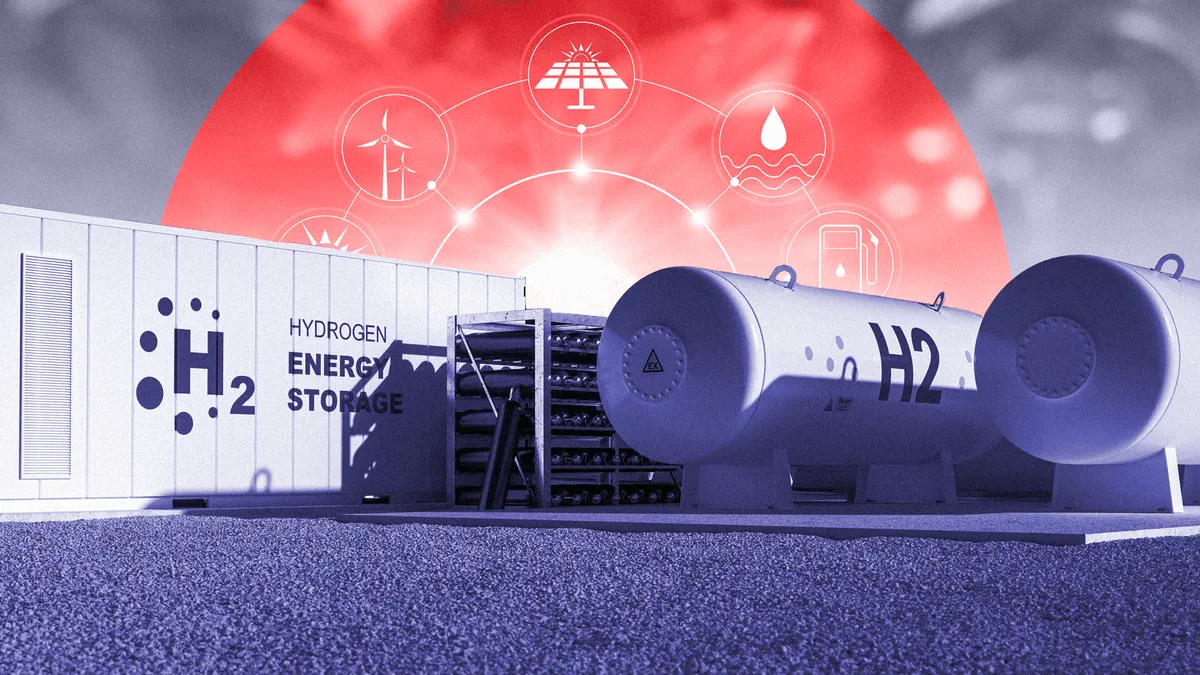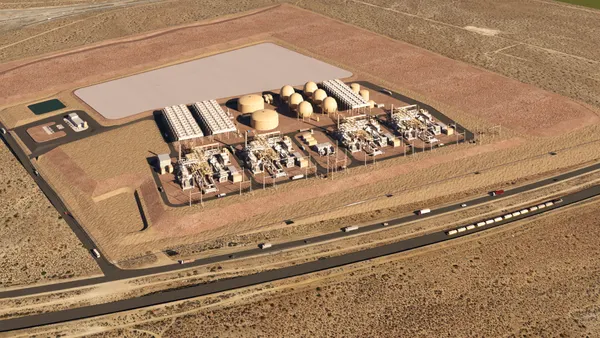Dive Brief:
- More research is needed to understand the economics of long-duration and seasonal storage technologies to make sure they can play a role in decarbonizing the electric grid, according to a new article published in the journal Nature Energy.
- The article, written by National Renewable Energy Laboratory (NREL) research engineer Omar J. Guerra, builds on a previous study that looked at the cost-effectiveness of deploying long-duration energy storage (LDES) in conjunction with renewable energy to decarbonize the grid. That study, published in March in Nature Energy, found that LDES storage costs and discharge efficiency need to improve in order to displace nuclear power or natural gas power plants as sources of grid reliability.
- Although there are "promising opportunities" for LDES, Guerra writes, "comprehensive modeling of multi-scale energy storage technologies remains a major challenge towards achieving complete understanding of the value of storage technologies in achieving carbon-free or high renewable power systems."
Dive Insight:
Of the roughly 173.7 GW of installed and operational storage power capacity worldwide, 93% is short-duration storage that provides up to 10 hours of discharge at rated power, according to the Department of Energy. That type of storage is helpful for handling peak demands on a daily basis, but longer duration will be needed to handle the day-to-day and seasonal variability of wind and solar generation and to boost grid resiliency.
"Lithium-ion batteries are some of the cheapest storage options, but they have limitations in terms of how far they can take us on our goals," said Jesse Jenkins, an assistant professor at Princeton University and a co-author of the original March study. "There's a wide range of potential technologies that could play a role in storage. … The question is what technology is economical to get us there."
The researchers used an advanced model of a simulated electric system to evaluate different LDES technologies based on power capacity cost, energy capacity cost and efficiency. The technologies — covering a range of solutions including hydropower, aqueous sulfur flow batteries, hydrogen storage and compressed air — were considered relative to existing energy sources, rather than being assessed as standalone tools. The study found that the energy capacity cost for an LDES solution would have to drop to roughly $10 per kWh to fully displace nuclear power on the grid, and would have to fall to $1 per kWh to displace natural gas power plants with carbon capture and sequestration. The current storage energy capacity cost of batteries is around $200 per kWh.
The findings, Guerra wrote, should "help inform research-and-development efforts in energy storage, inform private and public investment and provide a better understanding of market opportunities for these novel long-duration and seasonal storage technologies." Guerra added that more detailed and representative modeling that builds on the simulations — including better operational information that could be incorporated into production cost models and capacity planning models — can help policymakers and investors target technologies.
The Energy Act of 2020, which passed as part of the fiscal year 2021 omnibus in December, included a $30 million annual program researching long-duration storage. The White House has also proposed $35 billion in R&D funding into climate solutions — including energy storage and advanced nuclear — as part of the American Jobs Act infrastructure plan. That's on top of the Energy Department's existing research into long-duration storage.
Jenkins said those research efforts will help bring new LDES systems to the market and can identify where some solutions might work. For example, he said, hydrogen or compressed air storage can be cost-effective if there are sufficient underground caverns for storage (a strategy being explored in a Utah project). Other thermal storage solutions show promise in their low charging cost, although the discharge cost remains high because they need a turbine to produce energy. Ultimately, he said, it is clear that currently, LDES is "unlikely to fully displace firm generation," meaning some nuclear and gas plants will remain online during the energy transition.
"While some people may have a vision of LDES being the final answer and us having a 100% wind, solar and storage system, it looks like that would require more aggressive performance and be more costly," said Jenkins. "As usual, the answer is that we need all of the above."














